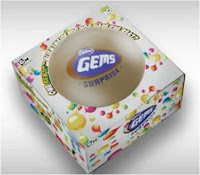Engage Customers to Create Brand Equity
Originally Published here at adclubbombay.com
Engagement means creating involvement. Customer engagement means the effort taken by the brand to develop an involvement between customers and the brand beyond regular purchase and use.
Traditional marketing practices seldom encourage active involvement of customers. The marketers often are satisfied with the regular purchase of the product by the customers and the level of engagement with the customers is limited to handling queries, handling complaints and loyalty programs.
The new economy has necessitated marketers to think beyond the typical purchase/sales orientation to a more pro-active customer engagement orientation. The web 2.0 and the rising popularity of social media have created a new cost effective platform for marketers to build and maintain customer engagement programs.
Take the example of ZooZoo- the characters created by Vodafone to promote its Value Added Services. With in a short span of time, ZooZoo was all over the social media and the Facebook fan count reached 2, 75000 at the time this article is being written. Using ZooZoo, Vodafone has created a new way of connecting and engaging with the target audience.
Create a culture of engagement.
It is not easy to create effective customer engagement. The first and foremost requirement for effective customer engagement is to orient the company culture towards a customer orientation. Customers can be demanding and more so when the company takes an initiative to reach out. Hence marketers should venture into creating active engagement only after the entire firm develops an orientation towards customers.
Make it easier for customers to connect.
An important requisite for active customer engagement is to make the process easier for consumers to reach the company. Active consumer engagement cannot work effectively in an outsourced environment. Hence the marketing department should be able to create and sustain a robust mechanism to respond to the consumers.
The web has made it easier for marketers to keep tab on consumers’ demands. But in a country like India, one should account for millions of consumers who cannot access such a channel. While creating such engagement channels, the brand has to create a robust process to ensure that it responds to the consumer immediately. An unanswered query or a complaint can create negativity and can be detrimental to the brand’s equity.
Have a vision
Brand managers should have a clear vision about the outcome and purpose of customer engagement. The critical question is “what is the expected outcome of this engagement?”
The outcomes of a customer engagement program need not be based on purchase or sales. There can be qualitative objectives also for such an engagement. How ever brands will reap the benefits of loyalty and repeat purchases from the consumers who are actively engaged with it.
When the consumers are actively engaged with the brand, one need not search too far for new product ideas. Highly involved consumers will be a vital information source for obtaining feedback and product improvement ideas.
Move to a higher ladder.
Once the platform is identified and target audience chosen, the brand should have something to say to the consumer. The brand can engage the customer in many ways. Typically during engagement, brands will assume the role of an expert offering advice to consumers on problems. The task for the marketer is to find the areas in which the brand should engage with its consumers. For example, through Gang of Girls website, Sunsilk is providing tips and advice on hair care which is the subject where the brand is an expert. The advantage of such an engagement is that the brand has more control over the conversation.
While identifying the area of engagement, the brand should be able to ladder up to a more abstract need rather than restricting itself into a category need. This will appeal to a larger audience and thus take the brand’s reach farther. Tata Tea created a highly successful engagement based on the theme “ Jagore “ inspiring many youths to register themselves as voters in the recent general elections. But the challenge for the brand is to take this engagement further since the elections are over.
Another way of engagement is where the brand provides a platform through which the consumers engage with each other. The brand acts as a facilitator rather than the expert. Consumer driven brand communities are the results of such an engagement. These engagements are more powerful than the brand driven engagements because the underlying cause for such engagements arises out of passion rather than profit.
It is all about action
Successful engagement arises out of action. Brands venturing into creating customer engagement must devise ways to create and maintain a higher energy level among the consumers. The engagement plan should have activities, contests, debates, meet ups, webinars, sharing, exchanges, tweets etc to keep up the energy level. This means that there is going to be a substantial investment on the part of the brand to keep the momentum going. The investment is more on the human side rather than monetary investment. Technology has enabled companies to keep these engagement costs minimal. But there has to be a dedicated team who will keep the activity levels high so that there is never a dull moment.







